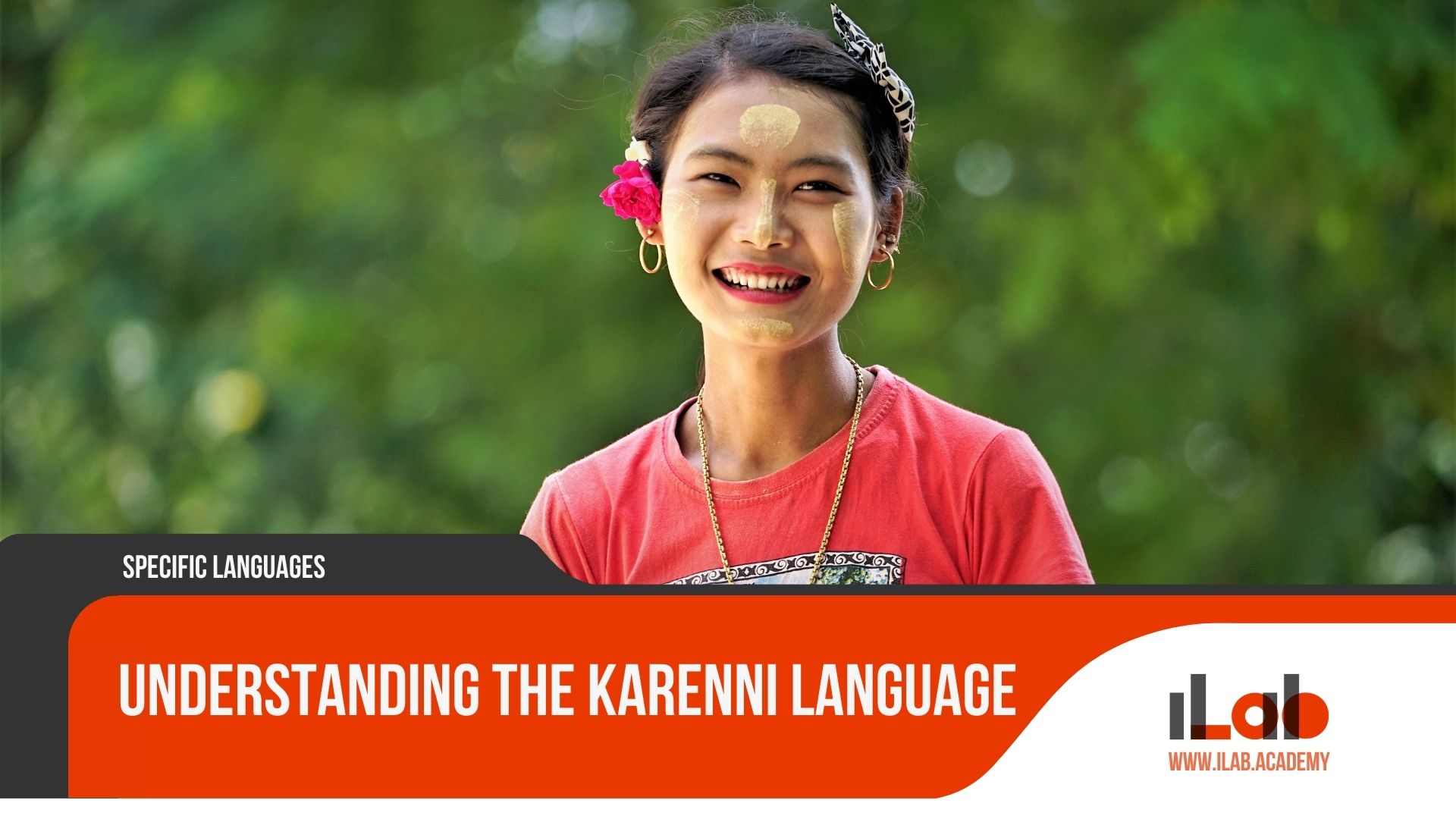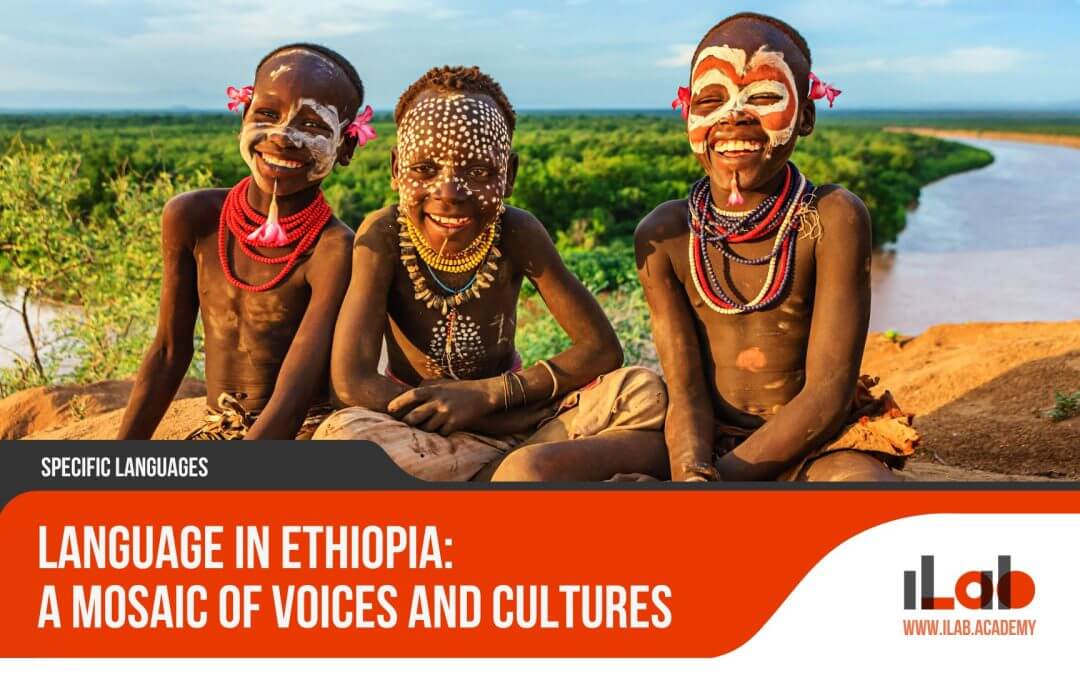Table of contents
The Karenni language, with its profound symbiotic relationship to the cultural identity of the Karenni people, stands as a testament to the resilience of an ethnic minority in the face of geopolitical upheavals and the relentless march of globalization. As a lesser-known member of the Tibeto-Burman language family, its phonetic intricacies, syntactic patterns, and rich lexicon not only serve as a medium of everyday communication but also as a vessel for the collective memory and wisdom of its speakers. In a world where linguistic homogenization poses a real threat to linguistic diversity, understanding and preserving the distinct voice of the Karenni language becomes an endeavor of considerable anthropological and ethical significance. This discussion invites an introspective examination of the efforts undertaken to sustain the language’s vibrancy, amidst the backdrop of the socio-political challenges and technological advancements that could alternatively spell its demise or herald a new chapter in its ongoing narrative.
Key Takeaways
- The Karenni language, also known as Kayah, is spoken by the Karenni people of Kayah State in Myanmar and diaspora communities.
- The Karenni language has a rich historical background influenced by political and social changes, shaping both the language itself and the cultural identity of its speakers.
- The Karenni language possesses unique linguistic features within the Tibeto-Burman language family, making it distinct and valuable.
- The Karenni language plays a vital role in traditional storytelling, music, rituals, and other forms of cultural expression among the Karenni people, highlighting its intrinsic connection to their rich cultural traditions.
Introduction to the Karenni Language
The Karenni language, also known as Kayah, is the linguistic thread that weaves together the cultural tapestry of the Karenni people, predominantly residing in Myanmar’s Kayah State and forming a vibrant diaspora across the globe. As a branch of the Tibeto-Burman language family, Karenni is not merely a means of communication but also an embodiment of the Karenni heritage and ethnic identity. The language serves as a foundation upon which the Karenni people build their social structures, educational practices, and cultural expressions.
Understanding Karenni is crucial for grasping the broader socio-cultural dynamics at play within this community. It is a language that encapsulates the collective memory and experiences of its speakers, who are deeply connected to their ancestral lands and traditions. The geographic context of Kayah State, with its rolling hills and fertile valleys, has shaped the evolution of the language, influencing its sounds and expressions to resonate with the natural landscapes of the region.
The ethnic context is equally significant, as the Karenni people are one of the many diverse groups in Myanmar. The language contributes to the rich mosaic of ethnic identities within the country, with each linguistic variation acting as a marker of cultural distinction. The diaspora communities, spread out across various countries, have taken the language with them, which has led to the spread of Karenni beyond its traditional boundaries. This has introduced new complexities and adaptations to the language, but also opportunities for its preservation and promotion on a global scale.
In essence, the Karenni language is more than a mere tool for everyday conversation. It represents the heart of the Karenni people’s way of life, their history, and their aspirations for the future. Understanding Karenni is to appreciate the cultural richness it embodies and the vital role it plays in the continuity of an entire community’s identity.
Historical Context of the Karenni Language
Delving into the tapestry of Karenni’s past, it becomes evident that the language’s evolution is deeply intertwined with the historical and social upheavals experienced by its speakers. The Karenni language, also known as Kayah, has roots that trace back through centuries of cultural shifts, migrations, and political changes. These factors have not only shaped the spoken word but have also influenced the cultural identity and social cohesion of the Karenni people.
Understanding the historical context of the Karenni language is essential for grasping its current status and challenges. The following table summarizes key historical milestones and their impact on the Karenni language:
| Historical Milestone | Impact on Karenni Language |
|---|---|
| Ancient Migrations | Introduced linguistic diversity, shaping early dialects |
| Regional Conflicts | Disrupted linguistic development and caused dispersal of speakers |
| Colonial Period | Introduced foreign linguistic influences and administrative changes |
| Modern Political Issues | Prompted a focus on language preservation amid cultural and linguistic threats |
Each point in history brought a wave of influence that the Karenni language absorbed, adapted to, or resisted. Ancient migrations spread the language across different regions, leading to the development of distinct dialects. Regional conflicts, including wars and skirmishes, often scattered communities, leading to further linguistic fragmentation and change.
During the colonial period, new languages and educational policies affected the use and status of Karenni. More recently, modern political pressures and conflicts have highlighted the importance of linguistic preservation as a means of maintaining cultural identity.
This brief historical overview underscores the resilience of the Karenni language amid continuous change. It also serves as a foundation for understanding the ongoing efforts to preserve and revitalize a language that encapsulates the history and identity of its people.
Linguistic Features of Karenni
Building on our understanding of the Karenni language’s historical backdrop, an exploration of its linguistic features reveals a rich tapestry of phonological, grammatical, and syntactical elements that distinguish it within the Tibeto-Burman family. Phonetically, Karenni is notable for its use of tonality, with variations in pitch conveying different meanings for what might otherwise be phonemically identical words. This tonal aspect adds a layer of complexity and nuance to spoken communication, demanding acute auditory discernment from both native speakers and learners alike.
Grammatically, Karenni exhibits a subject-object-verb (SOV) word order, which is a common trait among the languages of the Tibeto-Burman group. This contrasts with the subject-verb-object (SVO) word order typical of English, presenting a fundamental difference in sentence construction. The language also employs a range of affixes to modify the meaning of words, indicating tense, aspect, and mood. Such agglutinative features enable the expression of intricate ideas without the need for additional supporting words.
In terms of syntax, Karenni relies on particles and postpositions rather than prepositions, as used in English, to indicate relational concepts and grammatical functions. These syntactical devices provide clues about the roles of nouns within a sentence, such as direction, location, and possession.
The linguistic features of Karenni not only underline its uniqueness among the world’s languages but also serve as a cultural beacon for the Karenni people. Understanding these features is crucial for preservation efforts, as the language’s structure and usage patterns are inextricably linked to the identity and heritage of its speakers.
The Role of Karenni in Cultural Expression
Karenni language serves as a vital conduit for the transmission of the Karenni people’s folklore, music, rituals, and various other cultural manifestations. As the primary vehicle for storytelling, the language encapsulates the historical journey of the Karenni, imbuing it with the emotional resonance of their past. Music and song, integral to the Karenni’s cultural expression, rely heavily on the linguistic nuances that only the Karenni language can convey, thus preserving the unique melodies that have been passed down through generations.
Rituals and traditional ceremonies are also steeped in the Karenni language. Specific terms and phrases used during these events have deep cultural significance that is lost when translated into other languages. The language’s role in cultural expression is not only about preserving the past but also about maintaining a sense of identity and community cohesion in the present.
To illustrate the multifaceted role of the Karenni language in cultural expression, the following table highlights key aspects:
| Cultural Aspect | Role of Karenni Language | Significance |
|---|---|---|
| Folklore | Storytelling medium | Preserves history and moral lessons |
| Music | Lyrics composition | Maintains traditional melodies and emotions |
| Rituals | Ceremonial dialogue | Ensures the authenticity of cultural practices |
The table underlines the language’s importance in various cultural domains, emphasizing that the Karenni language is not merely a tool for communication but a repository of the community’s collective memory and identity. Understanding this role is crucial for appreciating why efforts to preserve the Karenni language are fundamentally linked to sustaining the cultural fabric of the Karenni people.
Challenges to the Survival of the Karenni Language
Despite concerted efforts to keep it alive, the Karenni language faces several formidable challenges that threaten its continued existence. The encroachment of more dominant regional languages, such as Burmese, within educational systems and media has led to a gradual erosion of the linguistic heritage of the Karenni people. This phenomenon, known as language shift, is a process where a community gradually adopts another language, often to the detriment of their indigenous tongue. The Karenni language, with its unique phonological and grammatical structures, risks being overshadowed in such a linguistic landscape.
Additionally, socio-political turmoil has played a significant role in the displacement of the Karenni population, leading to migration and the scattering of communities. Displacement disrupts the transmission of language from one generation to the next, often resulting in younger members of the community being less fluent or completely unacquainted with their ancestral language. The pressure to assimilate into new cultures and linguistic environments further compounds this issue, as it may lead to a preference for languages deemed more useful for economic and social integration.
The preservation of the Karenni language is not only a matter of maintaining linguistic diversity but also an essential aspect of cultural identity for the Karenni people. Language serves as a vessel for cultural knowledge, traditions, and values, and the loss of the Karenni language would signify a profound loss of the community’s cultural heritage. Therefore, recognizing and addressing these challenges is crucial for the survival and revitalization of the Karenni language.
Education and Literacy Efforts in the Karenni Language
Efforts to enhance education and literacy in the Karenni language have become a cornerstone in preserving this linguistic treasure for future generations. The initiatives undertaken to promote the Karenni language through formal and informal education are pivotal in maintaining the language’s vitality amidst the challenges it faces. These educational programs serve not only to teach the language but also to instill a sense of cultural identity and pride among the Karenni people.
In regions where the Karenni population is concentrated, schools have incorporated the Karenni language into their curricula, offering instruction in both the language itself and other subjects through the medium of Karenni. This bilingual approach ensures that students are proficient in Karenni while also gaining access to wider educational content. Community-led programs complement formal education by providing language classes and cultural workshops that reinforce the use of Karenni in everyday contexts.
Literacy rates in the Karenni language are an essential indicator of these efforts’ success. With an increase in literacy, Karenni speakers can engage with written materials, from educational resources to cultural literature, further enriching their interaction with the language. Moreover, literacy empowers individuals to participate in the documentation and teaching of their language, creating a sustainable cycle of knowledge transmission.
As we consider the future of the Karenni language, the emphasis on education and literacy is clear. These efforts are not just about language preservation but also about empowering a community to thrive linguistically, culturally, and socially. Through continuous support for educational initiatives, the voice of the Karenni people will echo strongly for generations to come.
The Karenni Language and the Digital Age
Building on the foundation of educational and literacy initiatives, the advent of the digital age has opened new horizons for the promotion and preservation of the Karenni language. As the world becomes increasingly interconnected through technology, there are substantial opportunities to support and revitalize this language spoken by the Karenni people of Kayah State in Myanmar and various diaspora communities.
The digital sphere offers several innovative avenues for language preservation:
- Online Resources: Websites and mobile applications dedicated to the Karenni language provide accessible learning materials for both native speakers and those interested in the language globally.
- Social Media: Platforms like Facebook, Twitter, and Instagram enable the Karenni community to share their language and culture with a broader audience, fostering a sense of unity and pride.
- Digital Archives: The creation of digital repositories allows for the documentation and safekeeping of linguistic data, traditional songs, stories, and other cultural artifacts that are vital to the identity of the Karenni people.
- Virtual Classrooms: Through video conferencing tools and online courses, language instruction can reach learners who are geographically dispersed, ensuring that even those far from their homeland can maintain their linguistic heritage.
The digital age, thus, not only acts as a tool for education but also serves as a platform for cultural exchange and preservation. By leveraging the power of technology, the Karenni language can be safeguarded against the risk of extinction, ensuring that its unique voice continues to resonate in the modern world. For an audience seeking understanding, it’s clear that the intersection of technology and linguistic preservation holds significant promise for the enduring vibrancy of the Karenni language.
Future Prospects for the Karenni Language
As the world evolves, so too must the Karenni language adapt to the shifting dynamics of a younger generation and the changing political and social environment to remain a vibrant element of cultural heritage. The future prospects for the Karenni language hinge on multiple factors, each playing a crucial role in either the demise or revitalization of this linguistic treasure.
The language faces challenges, such as the encroachment of more dominant languages and the potential loss of cultural identity among the youth. However, with the advent of new technologies and a renewed interest in indigenous languages worldwide, there is a glimmer of hope for the preservation and promotion of the Karenni language.
| Factor | Impact on Karenni Language |
|---|---|
| Intergenerational Transmission | Crucial for the language’s survival, requiring initiatives that encourage speaking Karenni at home and in the community. |
| Educational Programs | Offering formal education in Karenni can enhance literacy and usage among the younger population. |
| Digital Engagement | Online platforms can connect speakers, provide resources for learning, and promote cultural expression through the language. |
To ensure the language thrives, a multifaceted approach is necessary. This includes integrating Karenni into the education system, developing digital tools for language learning, and encouraging the use of Karenni in daily life and cultural practices. The vitality of the Karenni language will reflect the community’s collective will to keep their linguistic heritage alive for generations to come. With concerted effort and strategic planning, the future of the Karenni language can be one of resurgence and enduring presence.
Frequently Asked Questions
How Has the Migration of Karenni People to Other Countries Affected the Way the Language Is Spoken or Evolved Outside of Myanmar?
The migration of Karenni people has impacted the evolution of their language abroad. Dispersal often leads to linguistic adaptation, as speakers incorporate elements from surrounding languages. Despite geographical separation, many diaspora communities strive to maintain linguistic traditions. However, the risk of language dilution increases with subsequent generations, highlighting the need for dedicated preservation efforts to ensure the Karenni language remains a vibrant part of their cultural identity outside Myanmar.
Are There Any Notable Works of Literature or Significant Texts That Have Been Translated Into the Karenni Language, and What Is Their Impact on Cultural Preservation?
Significant literary works translated into Karenni enhance cultural preservation by fostering linguistic pride and identity among the Karenni people. These translations often serve as educational resources, reinforcing language use in academic and cultural contexts. They bridge generational gaps, ensuring that the language remains relevant and accessible to younger speakers while maintaining a connection to global literary heritage, thereby contributing to the overall robustness of the Karenni language.
How Do Non-Karenni Speakers Who Are Interested in the Language Typically Go About Learning It, Given Its Limited Presence in Language Learning Resources?
Non-Karenni speakers seeking to learn the language often encounter limited resources. Typically, they may begin with community-based learning, engaging directly with native speakers. Some may access online platforms or social media groups where language enthusiasts share materials. Additionally, partnerships with universities or linguistic preservation organizations can provide structured learning opportunities. These methods underscore the importance of grassroots initiatives in the absence of widespread, formalized language education programs.
Has the Karenni Language Influenced or Been Influenced by Other Languages in the Region, and What Are Some Examples of This Linguistic Exchange?
The Karenni language has both influenced and been influenced by regional languages, evidencing a dynamic linguistic exchange. For instance, it has absorbed loanwords from Burmese due to prolonged contact, while also imparting its own vocabulary to surrounding languages. Such interactions reflect historical trade, intermarriage, and cultural exchanges, underscoring the interconnectedness of the region’s linguistic landscape. Understanding these influences is crucial for appreciating the language’s evolution and resilience.
What Role Do International Organizations or Foreign Governments Play in Supporting the Preservation and Promotion of the Karenni Language?
International organizations and foreign governments contribute to the preservation and promotion of the Karenni language through funding, research, and advocacy. They collaborate with local communities to develop language education programs, provide resources for linguistic documentation, and raise global awareness about the language’s cultural significance. These efforts are crucial in ensuring the longevity and vitality of the Karenni language amidst globalization and the challenges posed by dominant languages.
Conclusion
In conclusion, the Karenni language remains a cornerstone of cultural identity for the Karenni people. Despite facing significant challenges, including displacement and the encroachment of dominant languages, efforts in education and digital innovation offer hope for its preservation. The resilience of Karenni is a testament to the community’s commitment to maintaining their linguistic heritage. Continued support and recognition of its importance are crucial for the language’s survival and the cultural richness it embodies.














